Las Hogueras: Culture, Connection, Celebration
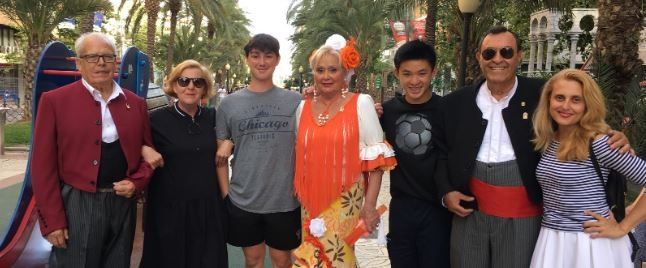
(This blogpost was written by Ryan Wang, CIEE "Language and Culture student")
A week into the Language Intensive program, I had already fallen in love with the charming city of Alicante, Spain. Every day, I was learning new vocabulary, improving my Spanish through conversations with locals, and exploring the city. Amidst my own adventures, Alicante would have its own. The bustling city with its beautiful beaches, lively tourism, and authentic Spanish life, prepared for one of the biggest festivals of the year. Las Hogueras de San Juan, or the Fogueres de Sant Joan in Valenciano (one of the four official languages of Spain), is an annual celebration unique to Alicante. It isn’t just a one-day celebration, like the Fourth of July or Thanksgiving. This celebration would last an entire week, with seven unique days of celebration. Luckily for me, my host family lives more or less in the center of Alicante, meaning we had easy access to the celebrations. To be honest, I had no idea what to expect. I would be blown away the fierce energy and life of the city.
I plucked up the courage to ask my host mom about more details surrounding the celebrations. My host family explained to me and my host brother Liam (in Spanish of course) how the Hogueras celebrations work during an extensive lunch conversation. I learned that the street we lived on hosts the Mascletá, a 5-minute daily fireworks show with different pyrotechnics. Each day after an early lunch, we walked together to the top of our apartment building or up the stairs of a nearby school. From there, we watched the 2pm fireworks show, described by locals as comparable to an earthquake. The first time I saw the Mascletá, the booms and cracks of the fireworks blew me away. They were low, daytime fireworks designed for impressive sound rather than light. A thundering song of rhythmic fireworks echoed throughout the city. Each day, there were more impressive fireworks and more people. Even after the Mascletá, the celebrations continued.
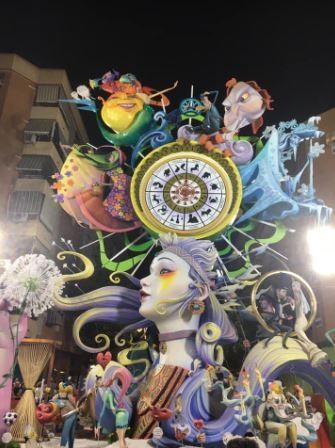
Music boomed from speakers in the streets while people danced, talked, and ate. Kids ran in the streets setting off smaller firecrackers into the night. The "barracas," private areas in the fenced-off streets with tables, chairs, bars, and dance areas, hosted groups of friends and families who celebrated throughout the night. People sat, talked, ate, and drank throughout the afternoon and night. Thankfully, my host family preferred not to participate in the barracas themselves. Yet no matter how someone preferred to celebrate, everyone felt alive and further connected to the city.
Through the large "Hogueras" statues, I learned about Alicante's society and government. The vibrant, large statues depicted the problems of Alicante from the perspective of the Spanish people. Each Hogueras was built throughout the week. Each had its own backstory. There were Hogueras statues in each neighborhood in Alicante, representing the unique perspectives of the natives. The last night of Las Hogueras, upon the firing of "La Palmera" from the Castillo Santa Bárbara, all of the Hogueras statues were burned. I watched the impressive burning of one statue. As the ash fell from the sky like rain and the smoke from the fireworks blanketed city like a cloud of fog, I felt even closer to Spain and Alicante.
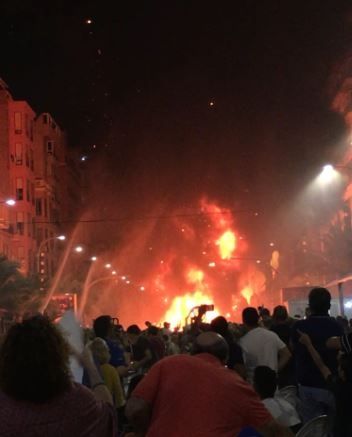
Las Hogueras of San Juan gave me the opportunity to learn about aspects of Spanish culture that I wouldn’t learn in the classroom. Spanish values, customs, and differences with the American culture continue to amaze me. As they say here, "nunca te acostarás sin saber una cosa más”- you will never go to bed without learning something new.
Related Posts
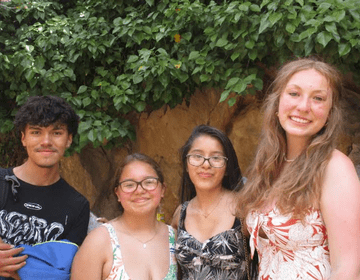
Group Adventures in Alicante
It’s truly heartwarming to witness the friendships and bonds that form so quickly during our high school summer abroad program in Alicante, Spain. Even though the students have known each... keep reading
How to Talk to Your Family and Friends About Your Summer Abroad in Palma
This blog post offers tips for Global Navigators on how to share their summer abroad experience in Palma with friends and family. From focusing on meaningful stories and journaling daily to staying connected and encouraging others to apply, it helps students reflect on their journey and express how it shaped them. It ends with a creative call to action—writing a letter to their pre-Mallorca self or sharing a favorite photo and story—to keep the experience alive even after returning home.
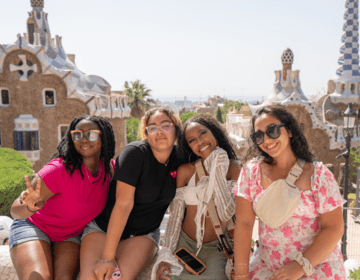
Student Spotlight: My Summer in Spain by Chisom Eke
A summer in Spain was something I once believed I would never experience—until now. From the Bronx to Barcelona, learning the cultural differences has been quite the ride. When I... keep reading
